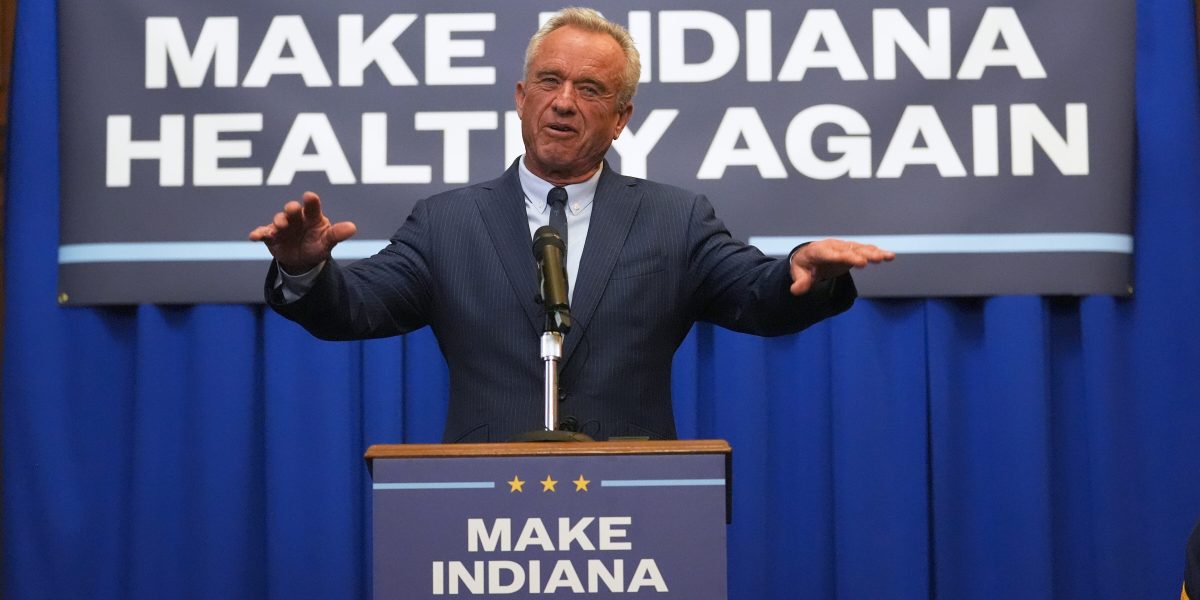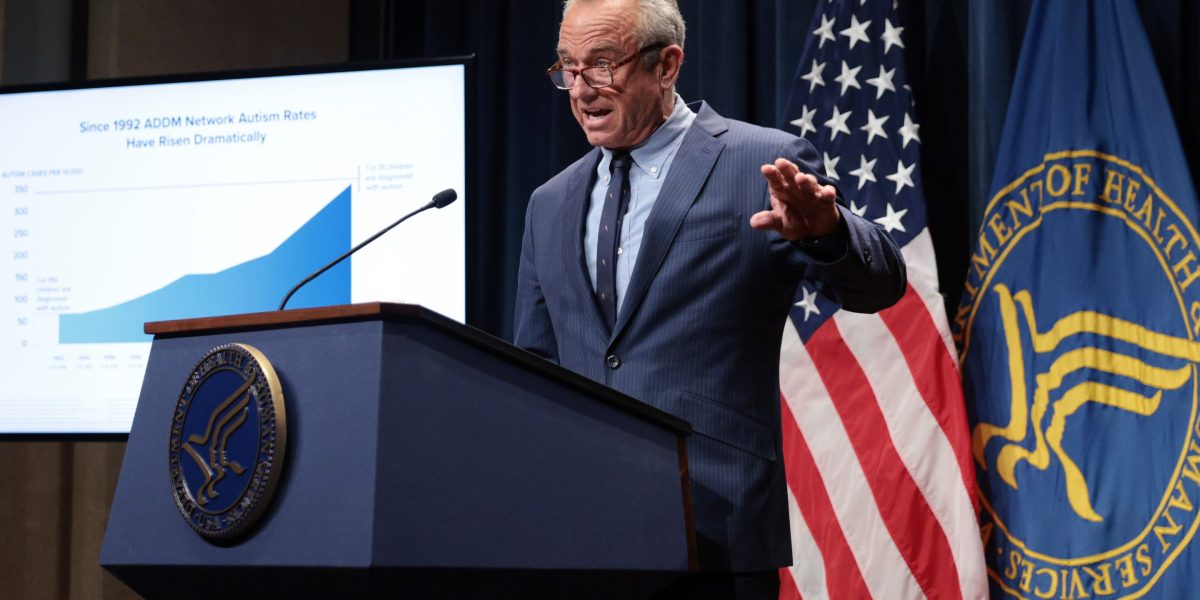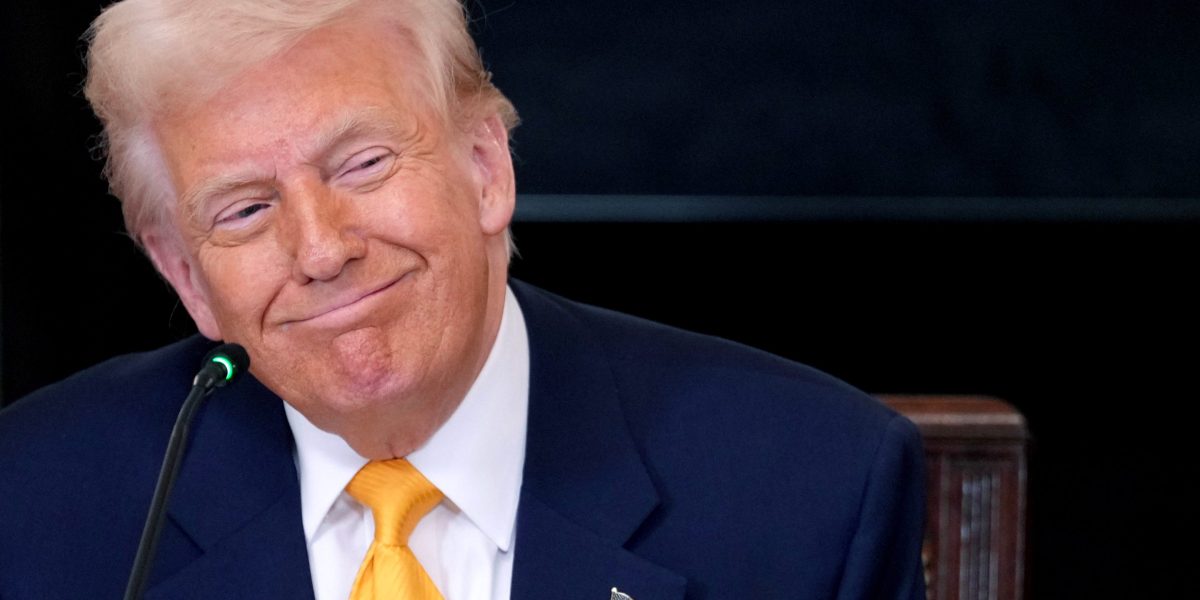Republican governors in Arkansas and Indiana moved Tuesday to ban soft drinks and candy from the program that helps low-income people pay for groceries, becoming the first states to ask the Trump administration to let them remove such items from the program long known as food stamps.
Arkansas Gov. Sarah Huckabee Sanders said her state’s request is aimed at improving the health of nearly 350,000 residents who participate in the Supplemental Nutrition Assistance Program, or SNAP.
“Taxpayers are subsidizing poor health,” Sanders said at a Little Rock news conference with U.S. Agriculture Secretary Brooke Rollins. “We’re paying for it on the front end and the back end.”
In Indianapolis, Gov. Mike Braun was joined by U.S. Health Secretary Robert F. Kennedy Jr. and Mehmet Oz, who leads the Centers for Medicare and Medicaid Services, to announce sweeping changes to “put the focus back on nutrition — not candy and soft drinks.”
The two states are among several taking steps to strip the purchase of certain foods that may contribute to poor health through the federal program that spent $100 billion to serve nearly 42 million Americans in 2024. The restriction has been a key goal for Rollins and Kennedy and his “Make America Healthy Again” agenda.
“They changed our food system in this country so that it is poison to us,” Kennedy said Tuesday. “We can’t be a strong nation if we are not a strong people.”
The Arkansas plan, which would take effect in July 2026, would exclude soda, including no- and low-calorie soda; fruit and vegetable drinks with less than 50% natural juice; “unhealthy drinks;” candy, including confections made with flour, like Kit Kat bars; and artificially sweetened candy. It also would allow participants to use benefits to buy hot rotisserie chicken, which is excluded from the program now.
The Indiana change would exclude candy and soft drinks from the list of foods eligible to be paid for with SNAP benefits. Braun also issued executive orders changing work requirements for SNAP participants; reinstating income and asset verification rules; and launching a review of “improper payments and other administrative errors” to ensure that SNAP meets federal goals.
Antihunger groups oppose SNAP food restrictions, saying that research shows that program participants are no more likely than other low-income Americans to buy sugary drinks or snack foods. And they say that limiting food choices undermines the autonomy and dignity of people who receive a benefit of about $187 per month — or about $6.20 per day.
“They just seem to be targeting a specific population without having data that says that they are the issue or that this is going to improve,” said Gina Plata-Nino, a deputy director at the Food Research and Action Center, a nonprofit advocacy group.
Trade groups representing beverage and candy makers criticized the effort, saying that they narrowly target SNAP participants.
Representatives for American Beverage accused state and federal officials of “choosing to be the food police rather than take truly meaningful steps to lift people off SNAP with good-paying jobs.”
Chris Gindlesperger, a spokesman for the National Confectioners Association, called the approach “misguided.”
“SNAP participants and non-SNAP participants alike understand that chocolate and candy are treats – not meal replacements,” Gindlesperger said.
The SNAP program is run by the USDA and administered through individual states. It is authorized by the federal Food and Nutrition Act of 2008, which says that SNAP benefits can be used for “any food or food product intended for human consumption,” except alcohol, tobacco and hot foods. In general, benefits are available to households with gross income at or below 130% of the federal poverty level, or about $33,500 a year for three people.
Excluding any foods would require Congress to change the law — or for states to get waivers that would let them restrict purchases, said Katie Bergh, a senior policy analyst for the Center on Budget and Policy Priorities, a nonpartisan research group.
Over the past two decades, lawmakers in several states and from both political parties have proposed halting SNAP payments for soda, chips, ice cream and “luxury meats” like steak, as well as bottled water and decorated birthday cakes. Since 2004, there have been six previous requests for waivers, including four that were not approved, one that was withdrawn and one request that was incomplete.
In rejecting the waivers, the USDA said there was no clear standard to define certain foods as unhealthy and that restrictions would be difficult to implement, complicated, costly and might not change participants’ food purchases or improve health.
This story was originally featured on Fortune.com
Source link

 Entertainment8 years ago
Entertainment8 years ago
 Politics8 years ago
Politics8 years ago
 Entertainment8 years ago
Entertainment8 years ago
 Entertainment8 years ago
Entertainment8 years ago
 Tech8 years ago
Tech8 years ago
 Tech8 years ago
Tech8 years ago
 Tech8 years ago
Tech8 years ago
 Politics8 years ago
Politics8 years ago







